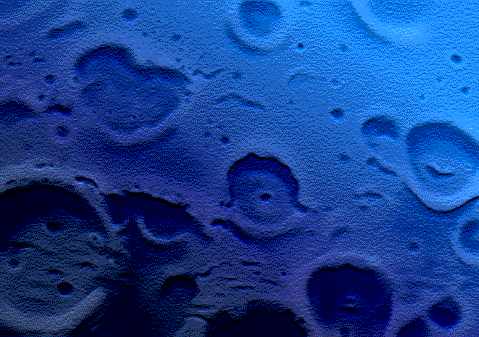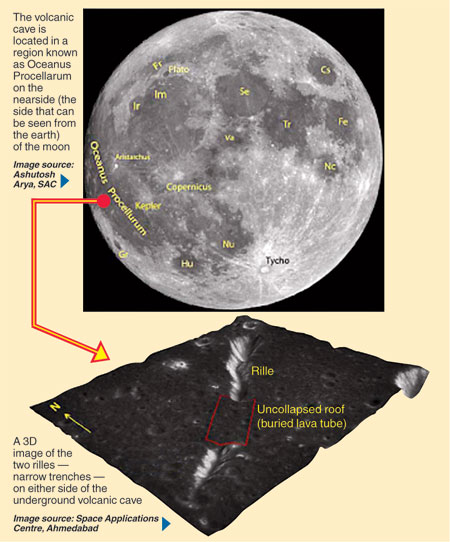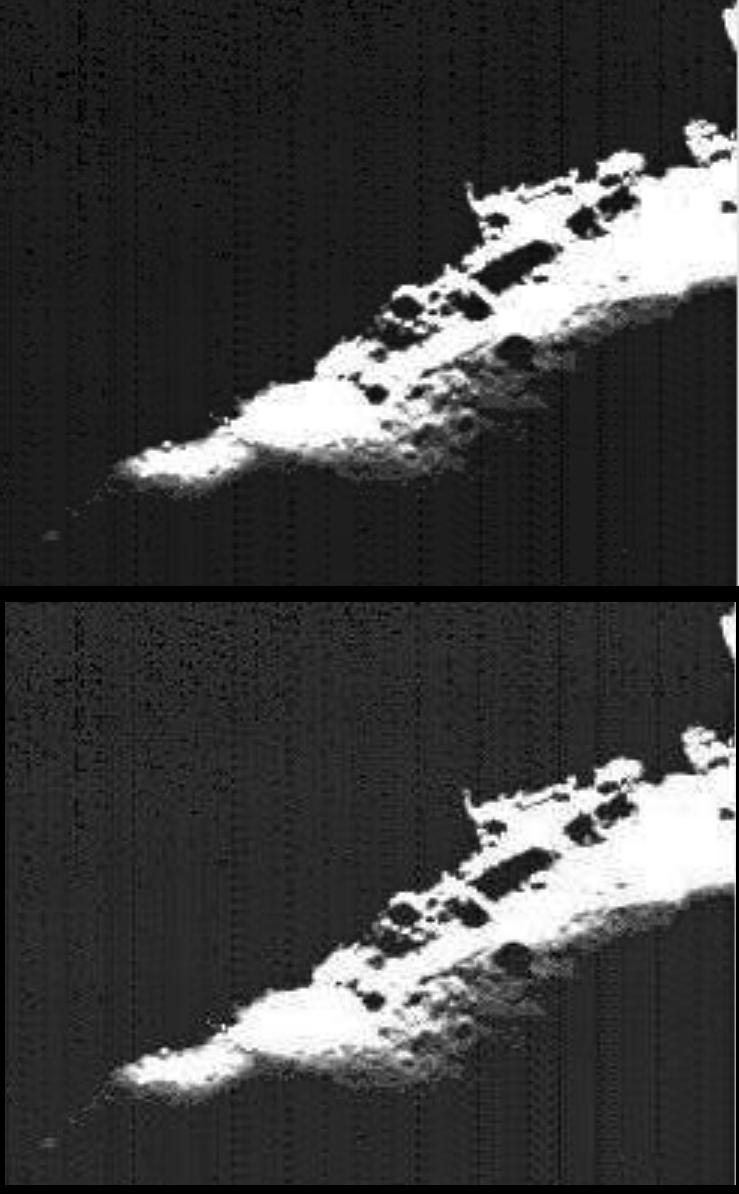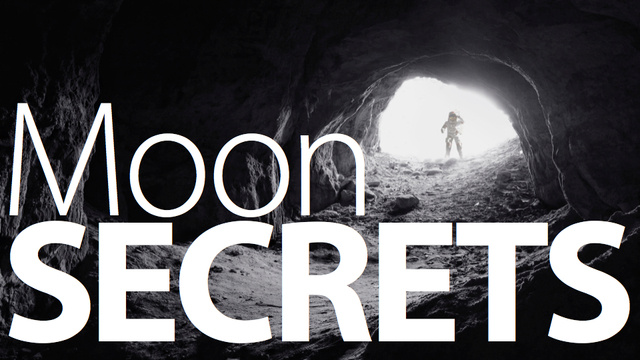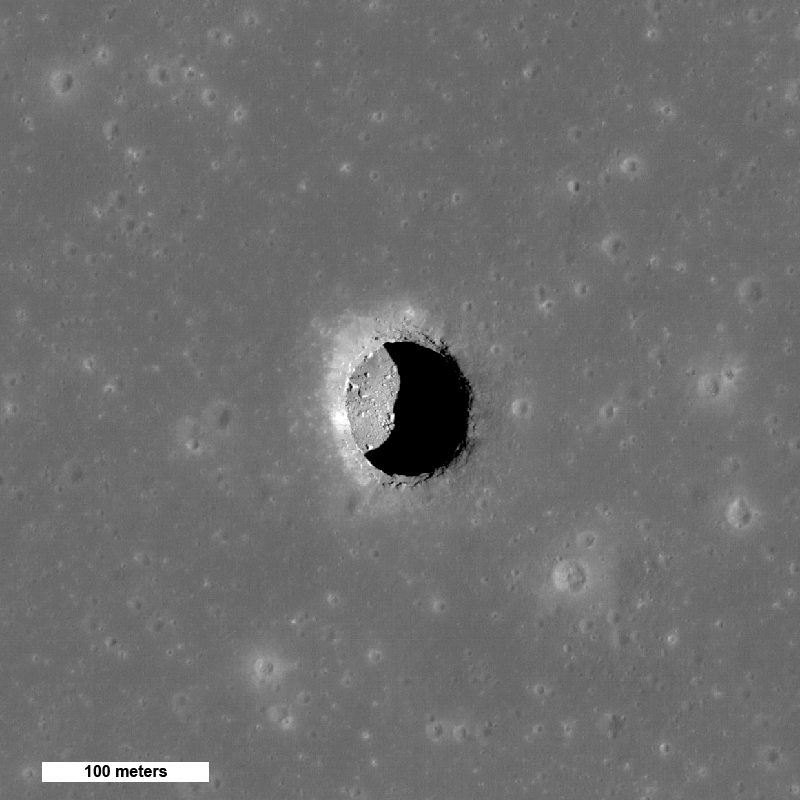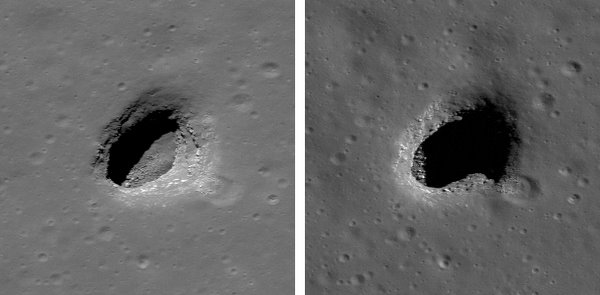|
The Enigmas on the Moon |
|||
|
By India's Chandrayaan-1 Spacecraft March 02, 2011 ..
The Indian Space Research Organization has discovered a "giant underground chamber" near the Moon's equator, in the Oceanus Procellarum area discovered by the Chandrayaan-1 spacecraft—more than one mile long (1.7 kilometers) and 393 feet wide (120 meters)-big enough to contain a small lunar city. The Indian researchers have published a paper detailing their findings and talking about the possibility of making this giant underground vault as a future human base. The settlement would be protected from radiation, micro-meteor impacts, dust and extreme temperature changes by the lava structure that provides a natural environmental control with a nearly constant temperature of minus 20 degrees Celsius (-4 degrees Fahrenheit), unlike that of the lunar surface showing extreme variation, maximum of 130 degrees Celsius (266 degrees Fahrenheit) to a minimum of minus 180 degrees Celsius (-292 degrees Fahrenheit) in its diurnal (day-night) cycle. Source: The Daily Galaxy
|
|||
|
Indian discovery raises possibility of shelter ..
By G.S. MUDUR
New Delhi, Feb. 23: A giant volcanic cave beneath the moon’s surface discovered by Indian scientists last year through an analysis of archived images from the Chandrayaan-1 spacecraft may be a candidate site for a future human habitat. Researchers at the Space Applications Centre, Ahmedabad, analysed 3D images from Chandrayaan-1’s Terrain Mapping Camera to identify the 1.7-kilometre long cave in a region of the moon called Oceanus Procellarum. The hollow structure created by ancient volcanic lava flows on the Moon may provide lunar explorers a natural shelter from radiation storms and extreme variations between day and night temperatures encountered on the lunar surface, the SAC scientists said. Their image analysis has revealed a hollow lava tube with a cavernous mouth — about 120-metres high and 360-metres wide —- and a roof estimated to be 40-metres thick. Details of the lava tube will appear tomorrow in the journal Current Science . “This is a monster cave,” Ashutosh Arya, a senior geologist at the SAC, told The Telegraph . The images also show two narrow trench-like structures that appear to lead into and out of the lava tube — a 4-km stretch aligned northeast-southwest appearing to move into the lava tube, and a 2-km stretch extending on the other side. The scientists believe these trenches, called rilles by geologists, represent the collapsed portions of what was once a much longer lava tube. “The hollow tube-like structure is similar to lava tubes observed on the islands of Hawaii,” said Arya. “But but we don’t find a lava tube on the Earth as large as this one.” Such buried lava tubes are expected to protect human explorers as well as instruments from radiation storms as well as extreme variations in temperatures on the Moon’s surface. The radiation is not expected to penetrate beyond 6 metres of the roof thickness. While the day and night temperatures on the moon swing from +120°C to -180 °C, temperatures inside the lava tube are expected to be near-constant -20°C. “Such natural protection will help cut down the bill for future human habitats,” said A.S. Kiran Kumar, a physicist at the SAC and the principal investigator for Chandrayaan-1's Terrain Mapping Camera. The SAC team plans to continue using the archived images from Chandrayaan-1 to look for more such structures in different areas of the Moon. “We’re trying to generate a database for future generations of space explorers," Kiran Kumar told The Telegraph. While the global space science community has shown a renewed interest in the moon, sections of scientists caution that it would be unrealistic to expect any long-term habitation efforts within the next two decades. The SAC scientists had announced their discovery of the lava tube at lunar science conferences in Ahmedabad and Houston, US, last year, but have described their results in greater detail in the journal Current Science this week. The Terrain Mapping Camera was among several scientific payloads aboard Chandrayaan-1, India’s first lunar orbiter, launched in October 2008, but which was lost several months later due to instrument failures. Two years ago, Japanese scientists using images from Japan’s SELENE spacecraft had reported finding a vertical hole on the Moon, which they interpreted to be a possible lava tube skylight. Their analysis, reported in the journal Geophysical Research Letters , showed a nearly circular 65-metre diametre hole in a volcanic province called Marius Hills. The scientists had estimated the depth of the tube to be about 80 metres. Junichi Haruyama and his colleagues had also proposed that such lava tubes may be potential sites for lunar outposts because they offer a much less harsher environment than the exposed surface. SOURCE: The Telegraph
|
|||
|
..
Source file: LRO-L-LROC-2-EDR-V1.0/M101025008RE
|
|||
|
..
Giant Underground Chamber Discovered
On the Moon
Back in 2009, the Japanese Space Agency JAXA announced moon hole deep enough to contain a small human base. Now, the Indian Space Research Organization has discovered a "giant underground chamber" near the Moon's equator, in the Oceanus Procellarum area. The huge cave— discovered by the Chandrayaan-1 spacecraft—is more than one mile long (1.7 kilometers) and 393 feet wide (120 meters). By comparison, the vertical hole that Jaxa discovered was only 213 feet (65 meters across) and 289 feet deep (88 meters). This new chamber is big enough to contain a small lunar city or a secret Nazi base with a few thousand UFOs. The Indian researchers have published a paper detailing their findings and talking about the possibility of making this giant underground vault as a future human base. The settlement would be protected from radiation, micro-meteor impacts, dust and extreme temperature changes by the lava structure: Lava provides a natural environmental control with a nearly constant temperature of minus 20 degrees Celsius (-4 degrees Fahrenheit), unlike that of the lunar surface showing extreme variation, maximum of 130 degrees Celsius (266 degrees Fahrenheit) to a minimum of minus 180 degrees Celsius (-292 degrees Fahrenheit) in its diurnal (day-night) cycle.They also point out that explorers would only need minimal construction, without the added cost of having to use expensive shields against the hazardous lunar environment. If humans ever colonize this chamber, I hope they call the city Attilan. SOURCE: Gizmodo - Giant Underground Chamber Discovered On the Moon |
|||
|
..
LRO Takes Closer Look at Moon
Caves
As promised, the Lunar Reconnaissance Orbiter is taking more detailed looks at the lunar pits, or lava tubes that have been discovered by LRO and the Kaguya spacecraft. These are deep holes on the moon that could open into vast underground tunnels, and could serve as a safe, radiation shielding habitats for future human lunar explorers. Plus, they are just plain intriguing! This image of a pit found in the Sea of Tranquility (Mare Tranquillitatis) was taken as the Sun was almost straight overhead, illuminating the region. By comparing this image with previous images that have different lighting, scientists can estimate the depth of the pit. They believe it to be over 100 meters! See more “in-depth” look at more of the caves on the Moon, below: ..
These two images show a pit in Mare Ingenii, which reveal different portions of the floor as the Sun crosses from west to east. Again, by measuring the shadows in different lighting, the Sea of Cleverness pit appears to be about 70 meters deep and about 120 meters wide. These long, winding lava tubes are like structures we have on Earth. They are created when the top of a stream of molten rock solidifies and the lava inside drains away, leaving a hollow tube of rock. There have been hints that the Moon had lava tubes based on observations of long, winding depressions carved into the lunar surface by the flow of lava, called sinuous rilles. If a human geologist could ever climbing down inside these tubes on the Moon, we could learn so much about the Moon’s history, and sort of travel back in time by studying the different layers on the Moon, just like we do on Earth.
LROC has now imaged the Marius Hills pit three times, each time with very different lighting. The center view has an incidence angle of 25° that illuminates about three-quarters of the floor. The Marius pit is about 34 meters deep and 65 by 90 meters wide. Read more about the Ingenii, Tranquillitatis, and Marius pits at the LROC website, and you can search the nearby area for clues in the full LROC NAC frame that may help determine if an extended lava tube system still exists beneath the surface. Source: LROC website Source: LRO Takes Closer Look at Moon Caves M126710873RE
- New Views of Lunar Pits - [tiff format]
|
|||
| FAIR USE NOTICE: This page contains copyrighted material the use of which has not been specifically authorized by the copyright owner. Pegasus Research Consortium distributes this material without profit to those who have expressed a prior interest in receiving the included information for research and educational purposes. We believe this constitutes a fair use of any such copyrighted material as provided for in 17 U.S.C § 107. If you wish to use copyrighted material from this site for purposes of your own that go beyond fair use, you must obtain permission from the copyright owner. | |||
|
|
